Researchers using radioactive decay analysis have recreated the early history of some asteroids in our solar system, revealing a more chaotic phase than previously thought. Plus, a near-Earth asteroid, a trove of black holes, and this week in rocket history, we look back at Mercury-Atlas 7.
Podcast
Show Notes
Hidden population of black holes
- UNC press release
- “RESOLVE and ECO: Finding Low-metallicity z ∼ 0 Dwarf AGN Candidates Using Optimized Emission-line Diagnostics,” Mugdha S. Polimera et al., 2022 May 24, The Astrophysical Journal
The beauty of dwarf irregulars
- NASA Goddard image release
Another NEA will safely pass near-ish Earth
Chaos reigned in early solar system
- ETH Zürich press release
- “The dissipation of the solar nebula constrained by impacts and core cooling in planetesimals,” Alison C. Hunt et al., 2022 May 23, Nature Astronomy
AI finds the math the humans avoided
- UC Berkeley press release
- “A ubiquitous unifying degeneracy in two-body microlensing systems,” Keming Zhang, B. Scott Gaudi, and Joshua S. Bloom, 2022 May 23, Nature Astronomy
Search for life could target binary star systems
- University of Copenhagen press release
- “Binarity of a protostar affects the evolution of the disk and planets,” Jes K. Jørgensen et al., 2022 May 23, Nature
This Week in Rocket History: Mercury-Atlas 7
- Flight of Aurora 7 (NASA)
Transcript
Today’s show is full of my favorite types of science, from volcanos to debunking asteroid clickbait.
Also black holes and how asteroids were apparently busier than thought in the early solar system.
And a computer tells us that some hard math is worth doing.
At least it didn’t promise us cake. This week in rocket history, we look back at NASA’s second crewed orbital flight, Mercury-Atlas 7.
All of this now, right here on the Daily Space.
I am your host Dr. Pamela Gay.
I am your host Erik Madaus.
And we’re here to put science in your brain.
Before I get into today’s first story, I just want to say that today is a day when science news has gotten – somehow – even more weird than normal. My news day started with word from NASA that a sharkcano was erupting in the Solomon Islands. Apparently, the underwater Kavachi volcano is home to a population of sharks that are adapted to live in hot acidic waters, and they thrive there. Or did? We don’t know. The volcano is currently erupting.
Folks, today’s news – it’s weird.
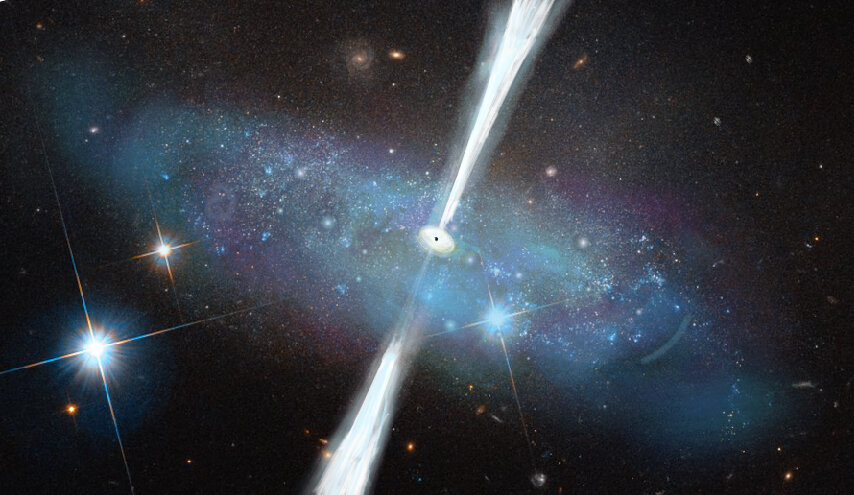
Story 1: Apparently dwarf galaxies have been hiding supermassive black holes or at least massive blackholes. When you’re a dwarf galaxy, you can only hide so much.
In a new paper appearing in The Astrophysical Journal, researchers led by the student-professor pair Magdha Polimera and Sheila Kannappan have uncovered evidence of massive black holes in star-forming dwarf galaxies. These 1,000-100,000 solar mass black holes are being caught in the act of consuming gas and dust, and the light released from material on its way toward their event horizons is largely lost to the light of surrounding star formation, but with careful study, this team was able to tease apart the specific colors of light from star formation and from stardust consumption.
Researchers have been studying dwarf galaxies near our Milky Way for decades, searching high and low for evidence of these middling size black holes, but so far definitive evidence just hasn’t been found. This could, in part, be due to the old age of most of these systems: older dwarf galaxies don’t have a lot of material to feed black holes. By looking at more active dwarf systems, they had a lot more interference to deal with but also had that chance to catch activity. As explained by Kannappan: Just like fireflies, we see black holes only when they’re lit up — when they’re growing — and the lit-up ones give us a clue to how many we can’t see.

Star formation is just a phase galaxies grow through. If – as this team did – you look at a bunch of star-forming dwarf galaxies and find the majority show signs of having massive black holes, you know that the majority of dwarf galaxies, in general, should have massive black holes.
These results are super pleasing. Researchers had been struggling to understand how merging dwarf galaxies could build supermassive black holes as they combined into larger galaxies. If they didn’t start out with larger black holes that could merge together, some mechanism for building a supermassive black hole from scratch was needed. Now, that problem was solved.
While not part of the search for black holes in dwarf galaxies, Hubble has conveniently released a stunning new image of a star-forming dwarf irregular galaxy: Minkowski’s object. This system is located near the cotton ball-like NGC 541. This particular dwarf galaxy is being prodded into star formation through interaction with jets from NGC 541. Not visible in these images, those jets glow in the radio. As near as scientists can tell, the jet triggered a large, intragalactic cloud of gas and dust to collapse, and that cloud was big enough to form an entire galaxy – an entire galaxy that looks like a spray of glitter and splatter of paint. Galaxies come in all shapes and sizes.
With this next weird news, the headlines around the internet aren’t all “OMG AN ASTEROID”, but they could have been. On Friday, May 27, one good-sized chunk of rock is going to pass pretty close to the Earth, but not so close you can see it with your unaided eyes.

And when we say close approach, we mean that asteroid 1989 JA will be at its closest at about four million kilometers away, or ten times the distance to the Moon. Granted, it’s going to be the largest asteroid to come close-ish to Earth this year, measuring about a kilometer across. If 1989 JA were to hit Earth, yes, that would be devastating. After all, the small body is traveling at nearly 50,000 kilometers per hour.
Or as our friend Franck Marchis of the SETI Institute notes: To provide some context, that is 17 times the speed of a bullet through the air. At this speed, the asteroid could travel around the planet Earth in 45 minutes.
Once again, 1989 JA is not going to hit Earth or even pass all that close. And this is the closest the asteroid will get for the next 172 years, so we can probably forget about it after Friday… until the next potentially hazardous asteroid makes headlines.
And now let’s talk about star systems, including our own.
Here in our own star system, astronomers and planetary scientists continue to work toward understanding how planets formed and how the system evolved over time. One of the more useful objects for this kind of research is the humble asteroid. When not actively threatening our existence, asteroids provide us with a snapshot of the early days of our solar system.

In a new study in Nature Astronomy, scientists used radioactive isotopes to determine the age of some of these asteroids by sampling meteorites. As lead author, Alison Hunt notes: Previous scientific studies showed that asteroids in the solar system have remained relatively unchanged since their formation, billions of years ago. They, therefore, are an archive, in which the conditions of the early solar system are preserved.
The analysis process is kind of amazing. When the metallic cores of asteroids formed, they were heated by radioactive decay. The team took samples of meteorites – rocks from space – dissolved them to better isolate elements such as silver, platinum, and palladium, and then measured the isotope abundance of each.
First, they calculated the present-day ratio of silver isotopes, which begin to accumulate as the metallic cores cool down. This value told the team both how quickly the asteroids cooled and when the process started. As a result, they found that the cores cooled rapidly, likely as a result of collisions with other protoplanetary bodies. Those collisions stripped off the exteriors of the asteroids, exposing the core to a very chilly outside and speeding up the rate of cooling from what was expected.
Then they analyzed the platinum isotopes, and the timing was narrowed down even further. Hunt goes on to explain: Our additional measurements of platinum isotope abundances allowed us to correct the silver isotope measurements for distortions caused by cosmic irradiation of the samples in space. So we were able to date the timing of the collisions more precisely than ever before. And to our surprise, all the asteroidal cores we examined had been exposed almost simultaneously, within a timeframe of 7.8 to 11.7 million years after the formation of the solar system.
And all of this chaos with collisions and rapid cooling likely occurred because the solar nebula – the gas left over from the Sun’s formation – was finally blown away by the solar winds. Without that gas to slow down the protoplanetary fragments, collisions became more frequent and more destructive.
The early solar system was not a calm, forgiving place in the universe, and I hope we get to see that the same is true for other systems as our exoplanetary observations grow more detailed.
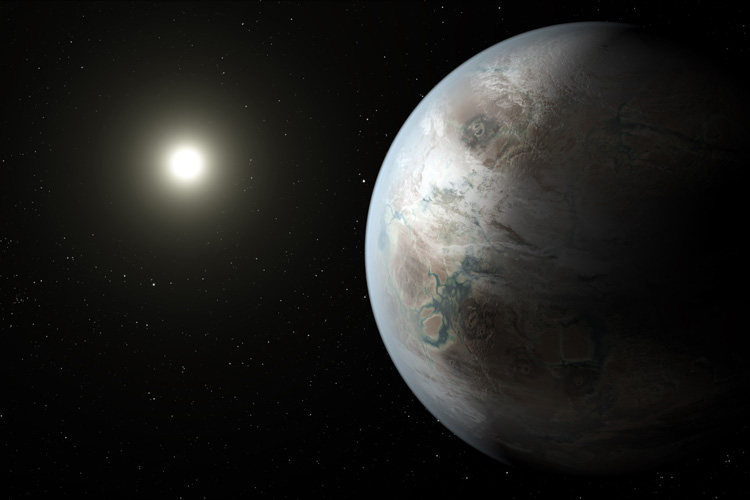
In trying to find solar systems, we do a lot of different things. We look for planets to pull their stars to and fro in ways we can see in stellar spectra. Basically, astronomers use fancy police speed guns to look for stars moving under the influence of planets. We also look for the light of stars to dip as planets pass between us and them.
And in the rarest kind of discovery possible, we can sometimes catch star systems passing between us and distant stars, and the star and planets in those solar systems can momentarily brighten the distant star through an effect called gravitational lensing. This effect comes straight from relativity and describes how mass can act as a lens and bend light intended for another part of the universe toward us, allowing us to see an object as brighter than it would otherwise appear.
The math behind relativity is not as hard as you might think; I’d much rather solve for relativistic effects than calculate how dust clouds affect how we see things.
The thing is that the maths do get complicated when you are dealing with the effects of both a star and planet on background light, and researchers had been making a pair of different assumptions to deal with what they thought were different kinds of events.
But the computers told them that was silly. Researchers trained an AI system to find and categorize gravitationally lensing planetary systems, and the AI unified the two systems in a way that demonstrated our simplifications caused us to miss how what we saw as two different situations are actually one situation that can appear in a variety of forms.

Sometimes, in our new reality, it appears that computers are going to have a thing or two to teach their programmers.
While understanding stellar system formation and evolution is obviously great just for the sake of science, we all know that what really gets people interested is the possibility of finding life beyond Earth and particularly on an exoplanet. Now, in new research published in Nature, astronomers show how binary star systems may be the best place to search.
Project lead Jes Kristian Jørgensen explains: The result is exciting since the search for extraterrestrial life will be equipped with several new, extremely powerful instruments within the coming years. This enhances the significance of understanding how planets are formed around different types of stars. Such results may pinpoint places which would be especially interesting to probe for the existence of life.
The research was done with a combination of observations of a young binary system and simulations of its possible past and future. Because of the gravitational tugs of the two stars, the gas and dust in the young system get whipped up every few hundred years, and as a result, the stars brighten as the material falls inward. These hotter episodes then further disrupt the protoplanetary disc but could also be responsible for the creation of organic molecules.
Those molecules then end up on icy bodies like comets, which then deposit their water ice and organics on rocky worlds, and voila, the building blocks for life are readily available. And with all these up-and-coming space and ground-based telescopes on the verge of being complete, we may soon observe those molecules in a distant star system.
Now let’s look back at the timeline of spacelight with this week in rocket history.
This Week in Rocket History
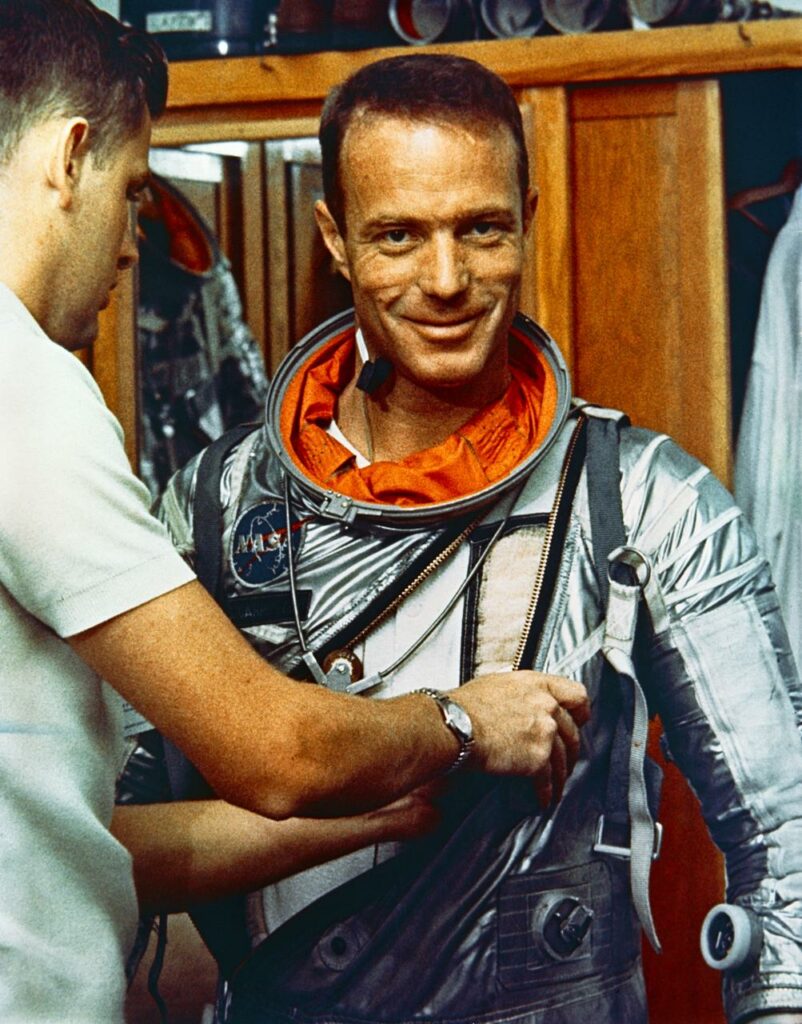
This week in rocket history: Mercury-Atlas 7.
Mercury-Atlas 7 was the seventh flight of Project Mercury, the U.S.’s first crewed spaceflight program, and in many ways, it was similar to the sixth flight, which was also the first American orbital flight.
Capsule Aurora 7 with astronaut Scott Carpenter launched from LC-14 at the Cape Canaveral Air Force Station on May 24, 1962. Five minutes later, he was in orbit, among the fastest crewed ascents ever.
Since this was NASA’s second-ever crewed orbital flight, Carpenter’s tasks were pretty simple. All he had to do was operate a few experiments and get back safely. The experiments included taking pictures from orbit, studying the behavior of liquids in weightlessness, and collecting data on the ionosphere. One phenomenon he studied, in particular, was mysterious clouds of particles near the spacecraft that reflected sunlight.
The nearly five hours in orbit went fine, but there were problems when Carpenter was to return. Some of the issues were because of mistakes he made, but others showed how skillful he was. Unlike Mercury-Atlas 6 with John Glenn, Carpenter was able to do more manual control of the spacecraft while in orbit. The reaction control system on the Mercury spacecraft had two separate tanks – one used by the automatic controls and the other during manual control. The significance of this will be apparent later.
This was originally planned as an experiment, but after one of the automatic systems malfunctioned, Carpenter had to take control for real. Part of the problem was that he was preoccupied looking at the mysterious particles and wasted manual control fuel in the first two orbits of his three-orbit mission. Because of this error, Carpenter had to conserve fuel by drifting through space uncontrolled during most of his last orbit.
When it came time to deorbit, the automatic system did not work properly, so Carpenter had to maintain attitude manually during the retro burn, which used more fuel than planned.
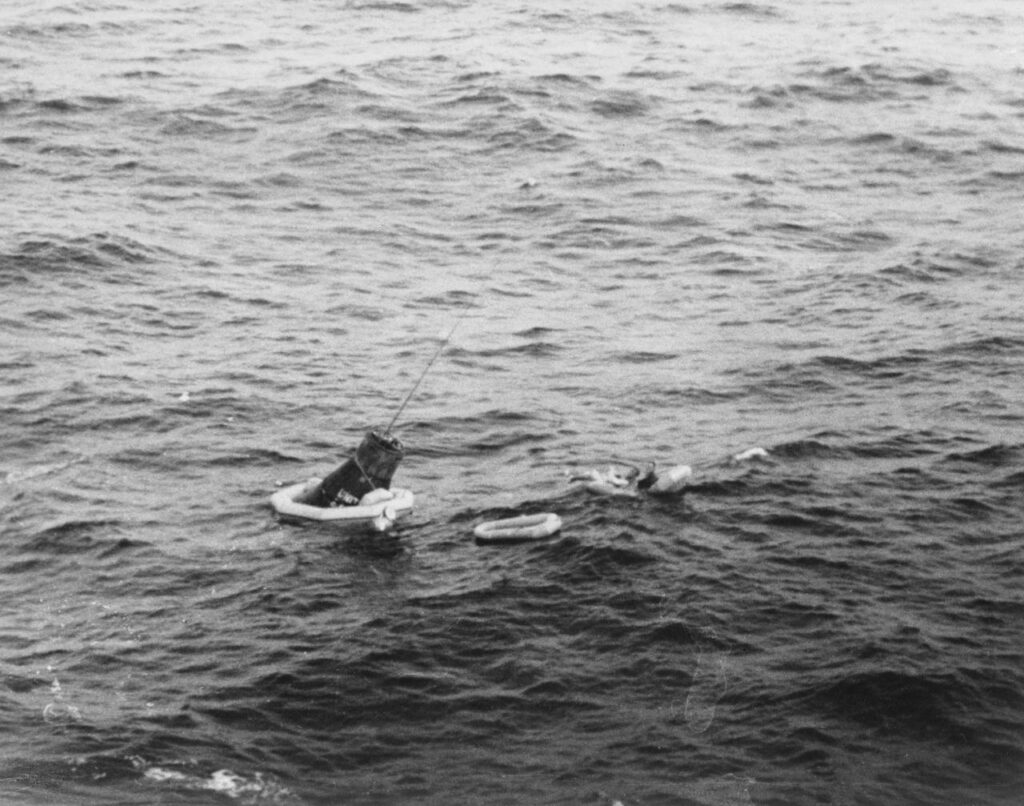
Finally, Carpenter was late initiating the deorbit burn to return him to Earth because he tried to fix the automatic system. After deorbit, he tried to resume manual control but was unable because the tank was empty. The automatic system mostly managed it, but its propellant was finally exhausted at about 21 kilometers altitude. Fortunately, the worst part of the reentry was over by then, and the capsule remained mostly in control, only swinging a few degrees beyond the ten-degree limit. However, the lack of fuel and the late start to the burn resulted in Aurora 7 landing 400 kilometers downrange from the planned landing site. And the automatic control system malfunction required Carpenter to manually deploy the parachutes at the right times.
The retrieval team took almost an hour longer than expected to find the capsule after it splashed down. While the recovery ship’s crew knew where Carpenter would land before he got there because of radar, they had to take the time to travel to where he splashed down.
The flight proved that the Mercury spacecraft was capable of supporting a human in space and returning them back to Earth safely. It also demonstrated that a human pilot could take control if needed. Future Mercury flights would be much longer – up to several days in space.
Carpenter was in good physical shape after the flight, but his career wasn’t. Chris Kraft, head of the NASA Astronaut Office, was not happy with Carpenter after he returned. In his opinion, Carpenter should not have wasted fuel looking at the mysterious particles. Carpenter never flew in space again and left NASA in 1964. He would return to NASA in 1967 to be the Executive Assistant to the Director of what is now called the Johnson Space Center after a brief stint in the Navy’s SEALAB project. One of the cool things he did while on SEALAB II was make the first phone call from the ocean floor to outer space, during the Gemini 5 mission.
Oh, and those mysterious clouds of particles around the capsule? Jettisoned urine that flash froze in space.
Statistics
And now, for some statistics.
The number of toilets in space is seven: four on the ISS, one on Soyuz MS-21, one on the Crew Dragon Freedom, and one on Tianhe.
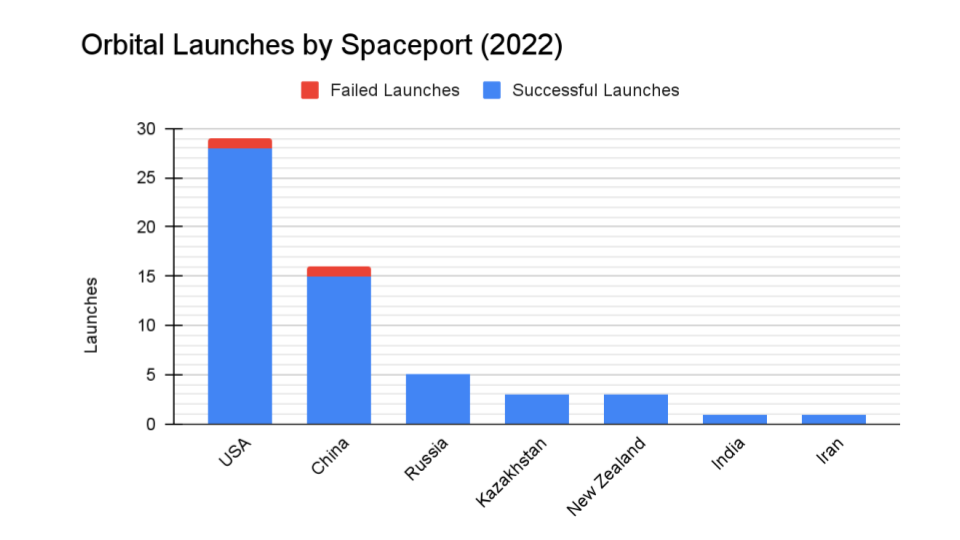
We keep track of orbital launches by launch site, also called spaceport. Here’s that breakdown:
USA 29
China 16
Russia 5
Kazakhstan 3
New Zealand 3
India 1
Iran 1
From those 58 launches, a total of 1,018 spacecraft were put into orbit.
Your random space fact for this week is that the returning Falcon 9 stage produces 3 sonic booms when it comes back through the sound barrier: the bottom of the stage, the legs, and the grid fins.
This has been the Daily Space.
You can find more information on all our stories, including images, at DailySpace.org. As always, we’re here thanks to the donations of people like you. If you like our content, please consider joining our Patreon at Patreon.com/CosmoQuestX.
Credits
Written by Pamela Gay, Beth Johnson, Erik Madaus, and Gordon Dewis
Hosted by Pamela Gay, Beth Johnson, and Erik Madaus
Audio and Video Editing by Ally Pelphrey
Content Editing by Beth Johnson
Intro and Outro music by Kevin MacLeod, https://incompetech.com/music/


 We record most shows live, on Twitch. Follow us today to get alerts when we go live.
We record most shows live, on Twitch. Follow us today to get alerts when we go live.